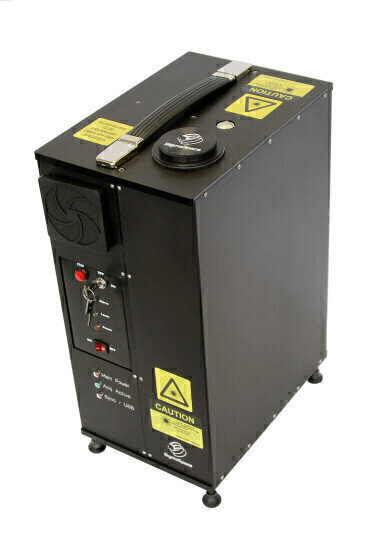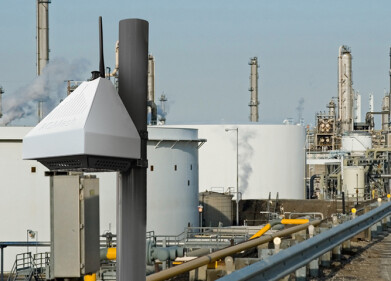Air Monitoring
New remote sensing LIDAR technology helps ET aim for the sky!
Jul 18 2017
When it comes to air pollution measurement, Stroud based Enviro Technology Services (ET) has been leading the way, bringing innovative and cutting-edge instrumentation to market since its inception in 1983.
The company has always been an advocate of remote-sensing, for instance, using short or long-path optical technology to quantify gas concentrations over distances ranging from a few metres (for vehicle emissions monitoring) through to several hundreds of metres for urban, fence-line and fugitive emissions monitoring.
Examples include the Accuscan RSD vehicle emissions monitoring system that measures the individual exhaust emissions of each and every vehicle that drives through the cross-road optical path and the Opsis DOAS system that enables multi-gas measurements from single or multiple open paths in ambient air.
Most recently, ET has formed an exclusive partnership with Sigma Space Incorporated from the USA and has been busy trialling the amazing mini-MPL system which stands for micro-pulse LIDAR. Sigma Space know a thing or two about remote sensing as the MPL was originally developed by NASA and instead of remote sensing looking down (i.e. from a satellite), the MPL, and now the mini-MPL, is ground based, looking upwards.
Designed to be housed in a small, temperature controlled weatherproof enclosure, the mini-MPL has a maximum vertical range of up to 15 km. That is about 9 miles for those who prefer non-metric units. It is therefore able probe up to the highest extents of the troposphere and beyond and with a minimum accumulation time of 1 second, builds up a detailed and dynamic profile of the atmosphere providing data on planetary boundary layer (PBL), cloud types (heights and tops) rain, ice-crystals and aerosol i.e. volcanic ash, Saharan dust as well as anthropogenic particulate matter etc.
The mini-MPL is amazing in many ways. Firstly, it is very small (hence the mini bit). It stands just less than 0.5 m high and weighs just 13 kg. Second, power consumption is very low at just 100 W. Third, it is classified as eye-safe. Fourth, it is a fraction of the cost of the large, power hungry LIDAR’s of days gone by and fifth, it is remarkably easy to use. Non-LIDAR specialists can be up-and-running with it in minutes and the Sigma Space analysis software makes simple work of understanding and presenting the wealth of information coming back from the 532 nm green eye-safe laser.
During 2017, ET will be demonstrating and trialling the mini-MPL at several leading Universities and working with some of the country’s leading LIDAR specialist and atmospheric scientists in order to showcase the huge capabilities and range of applications for this novel technology. Applications include; early warning of volcanic ash for airports, dynamic PBL monitoring, atmospheric aerosol research, weather forecasting and meteorology and even source apportionment of industrially generated particulate.
Digital Edition
IET 34.2 March 2024
March 2024
Gas Detection - Biogas batch fermentation system for laboratory use with automatic gas analysis in real time Water/Wastewater - Upcycling sensors for sustainable nature management - Prist...
View all digital editions
Events
Apr 17 2024 Guadalajara, Nexico
Apr 18 2024 Shanghai, China
Apr 22 2024 Hannover, Germany
Apr 22 2024 Marrakech, Morroco
Apr 23 2024 Kuala Lumpur, Malaysia


















